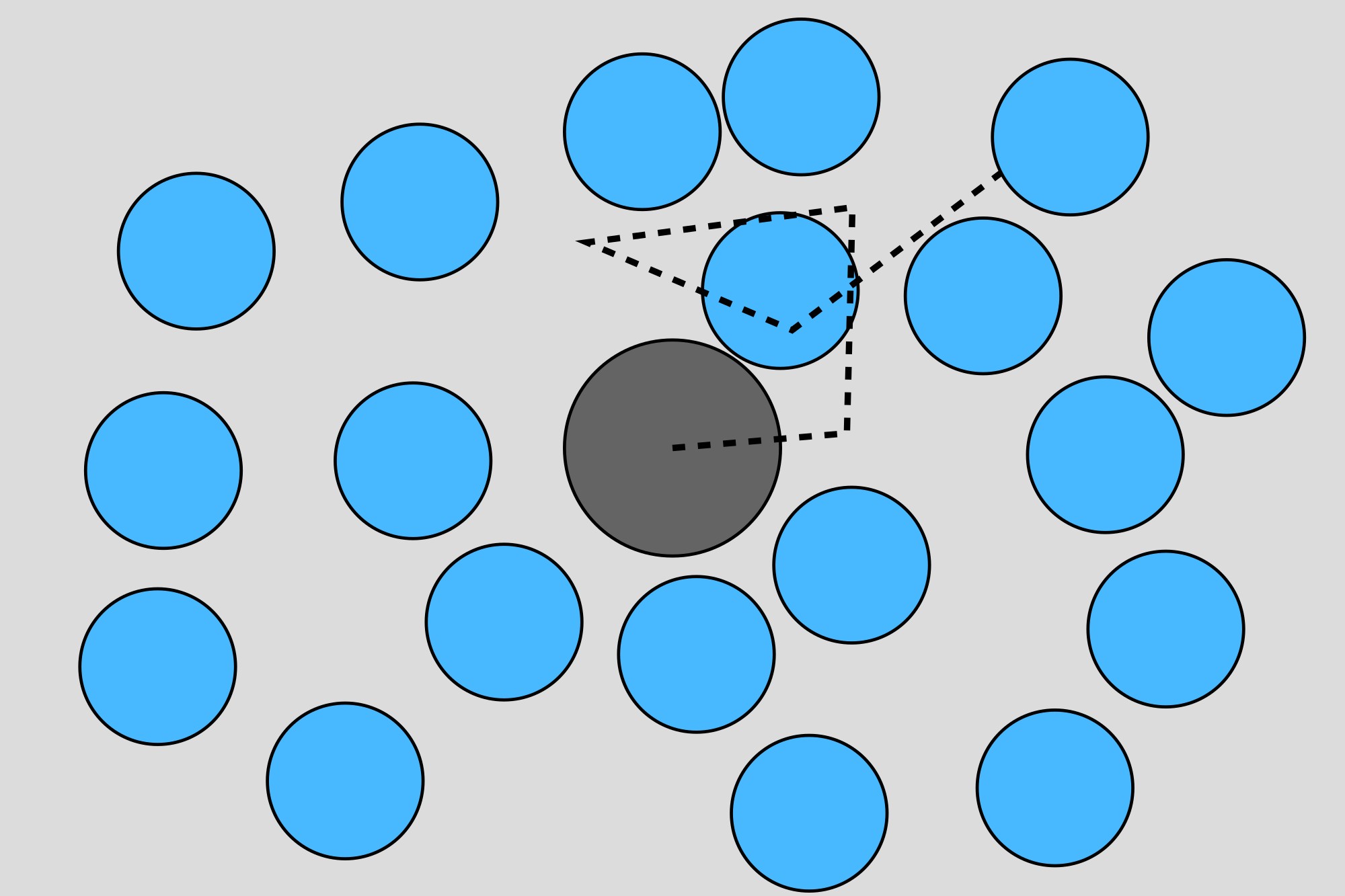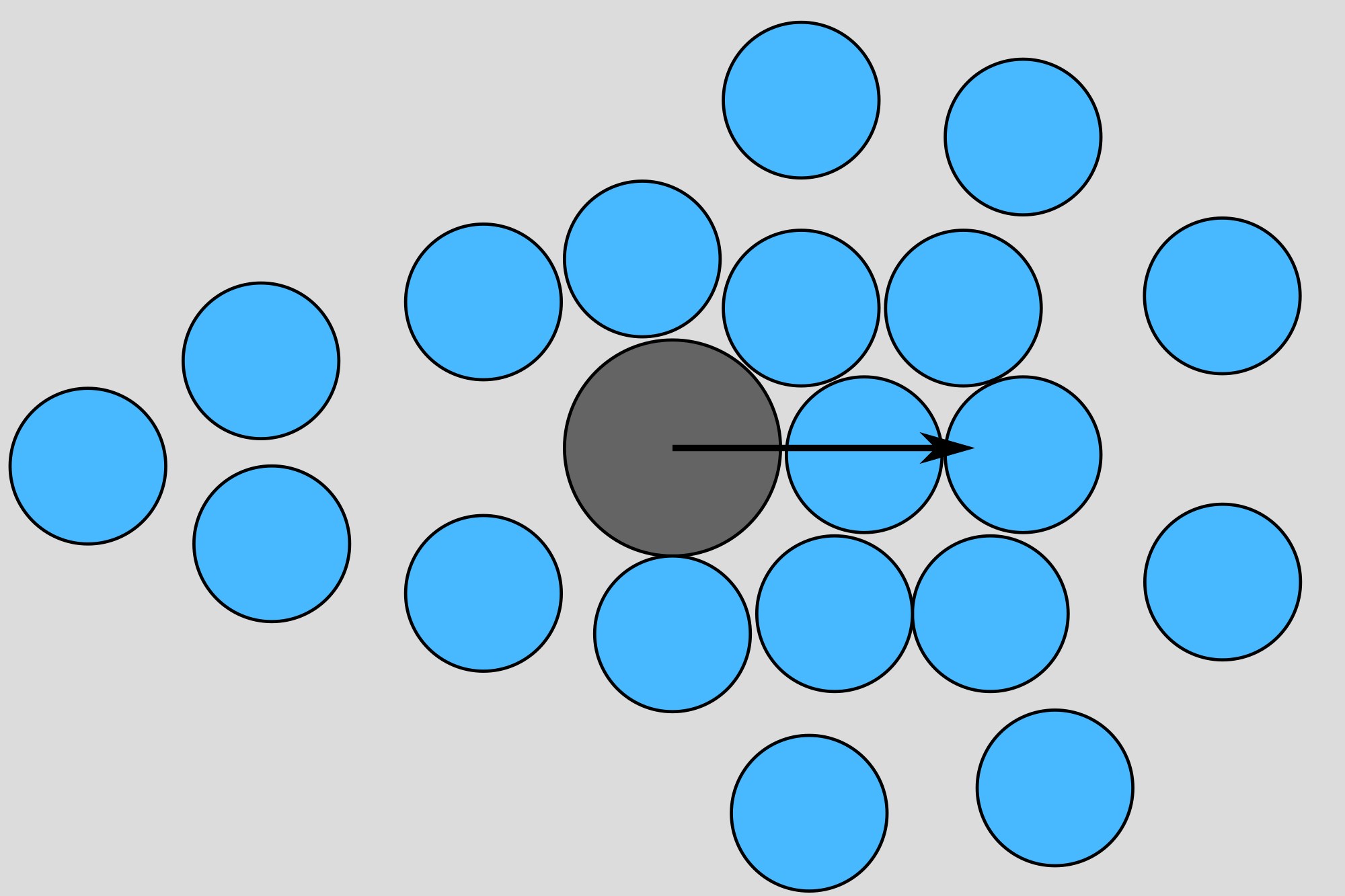In microrheology, the local rheological properties such as viscoelasticity of a complex fluid are inferred from the free (thermal) or forced motion of probe particles. The probes can be either embedded colloidal particles or tagged organelles and molecules existing in the biological material. The study of the deformation or flow of biological materials at small length scales has been termed biomicrorheology and deemed a frontier in microrheology. Indeed, particle-tracking microrheology has been widely used in experimental measurements to characterize the rheological properties inside living cells.
Left: diffusion of a free tracer; center: forced translational microrheology; right: rotational microrheology.
References
2022
-
Forced microrheology of active colloids
Zhiwei Peng, and John F. Brady
Journal of Rheology, Sep 2022
Particle-tracking microrheology of dilute active (self-propelled) colloidal suspensions is studied by considering the external force required to maintain the steady motion of an immersed constant-velocity colloidal probe. If the probe speed is zero, the suspension microstructure is isotropic but exhibits a boundary accumulation of active bath particles at contact due to their self-propulsion. As the probe moves through the suspension, the microstructure is distorted from the nonequilibrium isotropic state, which allows us to define a microviscosity for the suspension using the Stokes drag law. For a slow probe, we show that active suspensions exhibit a swim-thinning behavior in which their microviscosity is gradually lowered from that of passive suspensions as the swim speed increases. When the probe speed is fast, the suspension activity is obscured by the rapid advection of the probe and the measured microviscosity is indistinguishable from that of passive suspensions. Generally for finite activity, the suspension exhibits a velocity-thinning behavior—though with a zero-velocity plateau lower than passive suspensions—as a function of the probe speed. These behaviors originate from the interplay between the suspension activity and the hard-sphere excluded-volume interaction between the probe and a bath particle.
-
Trapped-particle microrheology of active suspensions
Zhiwei Peng, and John F. Brady
The Journal of Chemical Physics, Sep 2022
In microrheology, the local rheological properties, such as the viscoelasticity of a complex fluid, are inferred from the free or forced motion of embedded colloidal probe particles. Theoretical machinery developed for forced-probe microrheology of colloidal suspensions focused on either constant-force (CF) or constant-velocity (CV) probes, while in experiments, neither the force nor the kinematics of the probe is fixed. More importantly, the constraint of CF or CV introduces a difficulty in the meaningful quantification of the fluctuations of the probe due to a thermodynamic uncertainty relation. It is known that, for a Brownian particle trapped in a harmonic potential well, the product of the standard deviations of the trap force and the particle position is dkBT in d dimensions, with kBT being the thermal energy. As a result, if the force (position) is not allowed to fluctuate, the position (force) fluctuation becomes infinite. To allow the measurement of fluctuations in theoretical studies, in this work, we consider a microrheology model in which the embedded probe is dragged along by a moving harmonic potential so that both its position and the trap force are allowed to fluctuate. Starting from the full Smoluchowski equation governing the dynamics of N hard active Brownian particles, we derive a pair Smoluchowski equation describing the dynamics of the probe as it interacts with one bath particle by neglecting hydrodynamic interactions among particles in the dilute limit. From this, we determine the mean and the variance (i.e., fluctuation) of the probe position in terms of the pair probability distribution. We then characterize the behavior of the system in the limits of both weak and strong trap. By taking appropriate limits, we show that our generalized model can be reduced to the well-studied CF or CV microrheology models.


